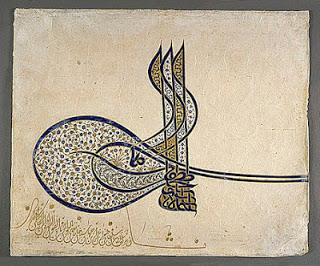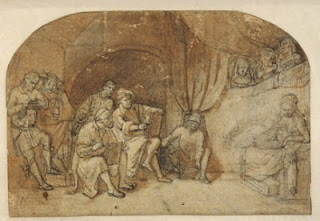I did both of these pieces of art when I was working on Sapelo Island, one of the magical Georgia barrier islands fronting the Atlantic Ocean. They were done almost in reaction to that small voice inside my head, saying 'this is a scene which could be the source of a painting or drawing'. Of course, once that decision is made, then comes the endless actions, reactions and alterations that are part of my art-making. Working in the wind and sun, with changing conditions, an artist adapts according to the moment, trying to push through on the original idea and inspiration, and yet trying, at the same time, to end up with a respectable piece of art. Incidentally, both watercolour and metalpoint are rather unforgiving media for changes and alterations, especially when drawing in different metals (silver, gold, copper, etc.). It makes for interesting, if not challenging moments during the process of art-making!
By contrast to the concepts and reactions to working outdoors, en situ, there is the work in the studio, when an artist can draw inspiration from a myriad sources, in the head, from ideas derived from the wide world outside, from music, from reading, from films or television, from one's family and its history, from politics... an endless reserve of triggers that suddenly spark an idea for a piece of art. In some ways, the work created in the studio is far more controllable, even if it is complex to execute. Normally, you don't have to battle the weather, light constraints, travel, insects, etc. that you encounter often outside.
Perhaps the only "constraint" in the studio is cultivating what Paul Cézanne talked of: "genius is the ability to renew one's emotions in daily experience". You have to keep fresh, alive, thinking and reacting, to find that springboard to a new venture in art creation. How that trigger comes is often, to me, totally mysterious, but again, I find that that mysterious small voice at the back of the head speaks when one least expects it. Ironing, day-dreaming, a walk - meditative, repetitive jobs all help. Dare yourself to try another medium, another voice, another subject that you have not embraced before. Even an idea that is not perhaps initially the most inspired can evolve and become something special, something significant. Whilst sustained hard work can yield results, there are times when other considerations in life - family, illness or whatever - have to be factored in. In those cases, creating art can go on, even if only in your head, for a while. Allow yourself to follow different work rhythms at those times, for ultimately, you will get back to inspiration and art-making, perhaps with added depth and ideas.


































